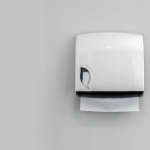How To Tie A Tourniquet-Try Using This Method to Apply A Tourniquet In No Time
Warning: Undefined variable $post in /home/dietofli/public_html/wp-content/plugins/code-snippets/php/snippet-ops.php(584) : eval()'d code on line 3
Warning: Attempt to read property "ID" on null in /home/dietofli/public_html/wp-content/plugins/code-snippets/php/snippet-ops.php(584) : eval()'d code on line 3
The estimated reading time is 7 minutes
Warning: Undefined variable $post in /home/dietofli/public_html/wp-content/plugins/oxygen/component-framework/components/classes/code-block.class.php(115) : eval()'d code on line 3
Warning: Attempt to read property "ID" on null in /home/dietofli/public_html/wp-content/plugins/oxygen/component-framework/components/classes/code-block.class.php(115) : eval()'d code on line 3

When a person is bleeding and has an open wound, many people panic and call the doctor, but what we do in the first minutes after that shock is important and it can save a person’s life. No matter how or when bleeding happens, it’s important to look at the statistics to realize the graveness of the issue. As a matter of fact, uncontrollable bleeding is the first on the list of deaths that can be prevented in the United States.
If we don’t do anything to save the person who is bleeding uncontrollably, they can die very soon, in just a couple of minutes. So before we offer someone who is bleeding help, we must make sure that we are not hurt, or we don’t need help first. After we make sure we are okay, it’s crucial to call 911 and ask for help. But most importantly, we can help the person by stopping the blood flow by tying a tourniquet, which can save the person’s life fast before the ambulance car arrives.
Knowing how to tie a tourniquet is a skill to master and an important one. Moreover, knowing when and where to do it can be crucial for saving someone’s life, whether they were involved in a car accident or gun violence.
What exactly is a tourniquet?
It is a type of band that is not loose but tight, and it helps the flow of blood be prevented. It is not as simple as it sounds and should be done precisely and with proper training. You might even say this is a unique device with various parts. It is best used as first aid until the doctors arrive on the spot and stop blood from flowing. In terms of the position, it is essential to note that people should only put it on legs and arms. It needs to resemble a strap and include a handle, preferably a long, thin one. The strap, of course, needs to be tied. The various parts or a tourniquet are usually a regular part of the emergency kits in every vehicle. You can also find this kit at pharmacies or at the American Red Cross.
When is it advisable to use a tourniquet?
Always make sure to stop the wound by direct pressure first, and if that doesn’t seem to work, use a tourniquet. It’s important not to rush things through, even though it is an emergency.
What is needed to apply a tourniquet properly?
The most likely scenario is that you may not have a tourniquet ready for you from a first aid kid. Oftentimes, you would have to make your own with the things you have. We cannot stress enough the importance of you being safe first, don’t forget that. Now, let’s talk about how to improvise with making a tourniquet. According to research, one thing to consider is that your improvised tourniquet will work only 60% of the time. However, that doesn’t mean that you should immediately give up. Once you gain training, practice, and enough knowledge on improvising correctly, you are free to develop your style, not forgetting the key points. Another thing to remember is that everything you try to do to stop the blood from flowing is a success by itself. Doing anything to stop the bleeding is always better than just standing there and waiting for someone else to arrive.
Two things are crucial when making your tourniquet
1 – a bandage in the form of a triangle
2 – a stick
Other things of secondary importance are shirts, towels, or even a belt.
When materials are in hand, it’s time to apply the tourniquet
It’s simple and easy to do, and you don’t need a master’s degree to apply to a tourniquet. However, before you attempt to apply it, make sure to call 911 first and foremost. If anyone is bleeding from their head or the torso, you cannot use a tourniquet. However, if a person is bleeding from those parts of the body, you can apply direct pressure to stop blood from flowing slowly.
Until the doctors come, you have enough time to apply the tourniquet, and remember, it is meant to stop the blood but not save the person’s life without getting proper medical help.
1. Make sure to find the source of bleeding
It will be easy to find the source of bleeding in many cases, but other times, it won’t be so obvious, especially with damaged clothing or other things interfering with the arm or leg. It’s always good to put the person in a horizontal position to better view and find the source faster.
2. Pressure application
Once you have identified the source, you need to apply direct pressure to stop the bleeding. At this point, you will see if you need a tourniquet or not. If the bleeding stops or at least slows down, a tourniquet is not needed at that point. If it doesn’t, start applying the tourniquet. The person must be aware that using a tourniquet might be painful, so if the person is conscious, let them know about it. Then, remove any clothes near the spot as the tourniquet needs to be put on the skin only.
3. Where exactly?
Whether it’s a towel or a cloth, the material you have should be placed a couple of inches above the wound. As a matter of fact, the Red Cross suggests that you should tie it approximately 2 inches above the injury. The most important thing to consider here is that you should put the tourniquet to the hurt limb but with the closest position to the heart as possible. For example, if there is a wound below an elbow, the tourniquet goes above the joint, closer to the heart. You can tie it just like you tie your shoes, but not using a bow.
4. Time for a stick or a windlass
Whether you are using a stick or another object, it should be firm and should tighten the tourniquet. Apart from using sticks, you can use a pen, a pencil, or even a spoon. Right where you made the knot, put the object and then tie the tourniquet around the object using a square knot.
5. Increase the pressure by twisting
For more pressure, start twisting the stick, and be careful when the bleeding will slow down. You can now secure the stick and tie it when it starts slowing down.
6. Timing is important
Tourniquets are lifesavers, but only up to a specific period. You can use them for up to 120 minutes, or 2 hours the most. That’s why it’s best to mark the time when you put the tourniquet for the doctors to know what they are dealing with.
7. Don’t remove it!
Always wait for the doctor to remove a tourniquet and never attempt to do it yourself.
Don’t make these mistakes while applying a tourniquet
Even with proper training and practice, errors are common when applying an improvised tourniquet. Here are some mistakes that you should be careful about happening:
- Never wait so long before using it: if you mistake waiting too long to apply a tourniquet, the consequences might be fatal. The person who has lost blood may begin to go into shock mode.
- Don’t loosely tie the tourniquet: in this way, you didn’t do the job well, and the blood flow will not be slowed down, unfortunately.
- Don’t leave the tourniquet for an extended period: leaving a tourniquet for longer than two hours can lead to more injuries. These include injured blood vessels or even nerves.
- Using materials that are not of good quality: sometimes, the materials can be inappropriate for the person who is bleeding. For instance, a cord should never be used when applying a tourniquet since it can make for another injury.
- A second tourniquet may be needed: This is true when a person is large, and the arm or leg may need a second tourniquet.














